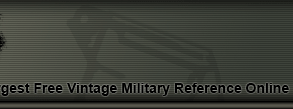|
1942 US Army Officer Summer Dress Uniform -
This is a US Army Dress summer uniform. Dated 1942. Of four pocket construction. With scalloped
pocket cover design. Cotton construction. Metal, gold colored buttons. Officer bands are placed
on the sleeves. Even though the uniform is of WWII era manufacturing it was used all the way through
the Vietnam war.

|
It was a common practice for the soldier to write his name inside the uniform.
|
A leadership stripe is found near the cuff of the uniform.
|
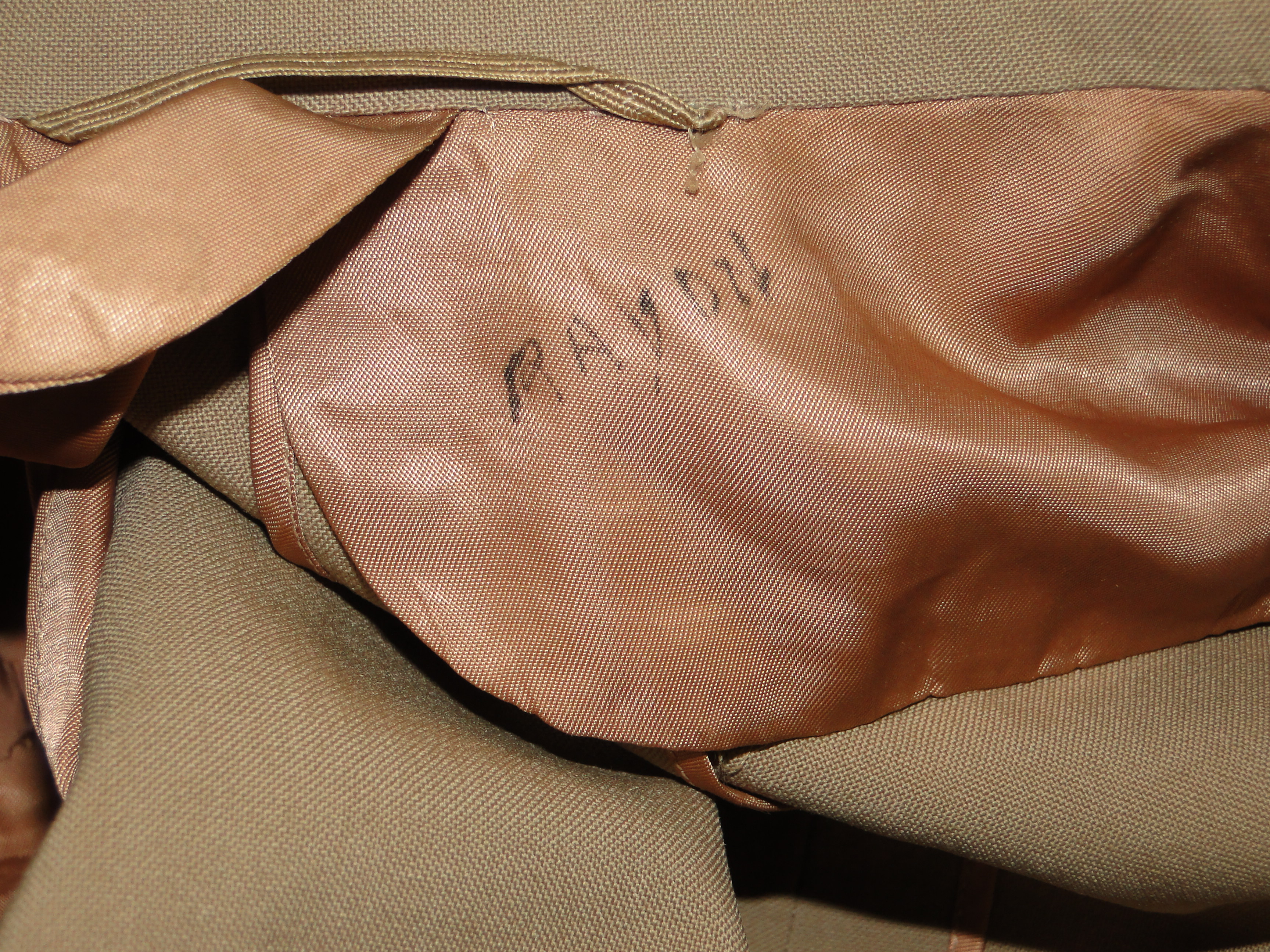
|
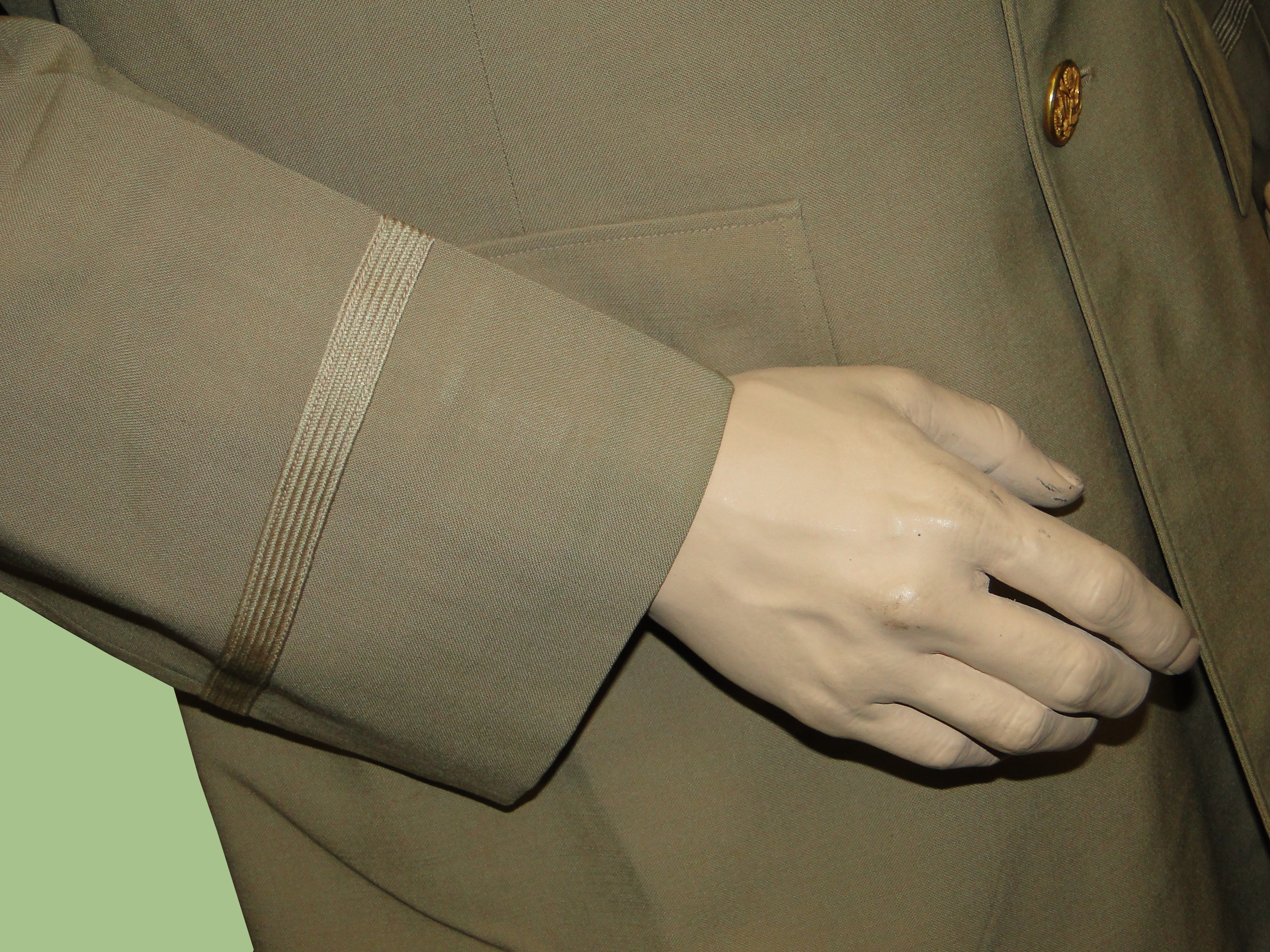
|
The uniform sample shown here is dated 1942. Note that there are patches newer than that date. That is because the uniform
was continued in service beyond WWII.
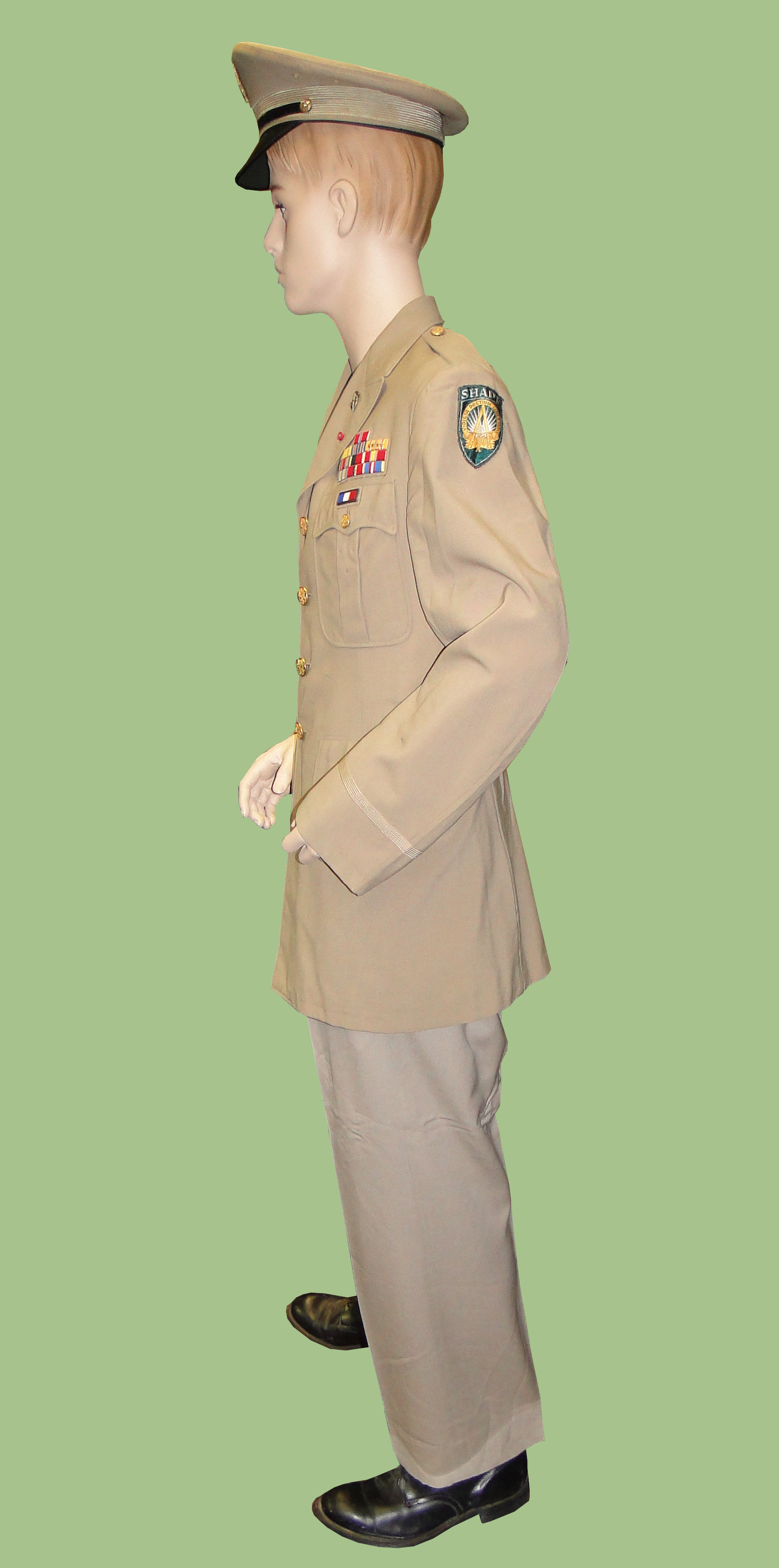

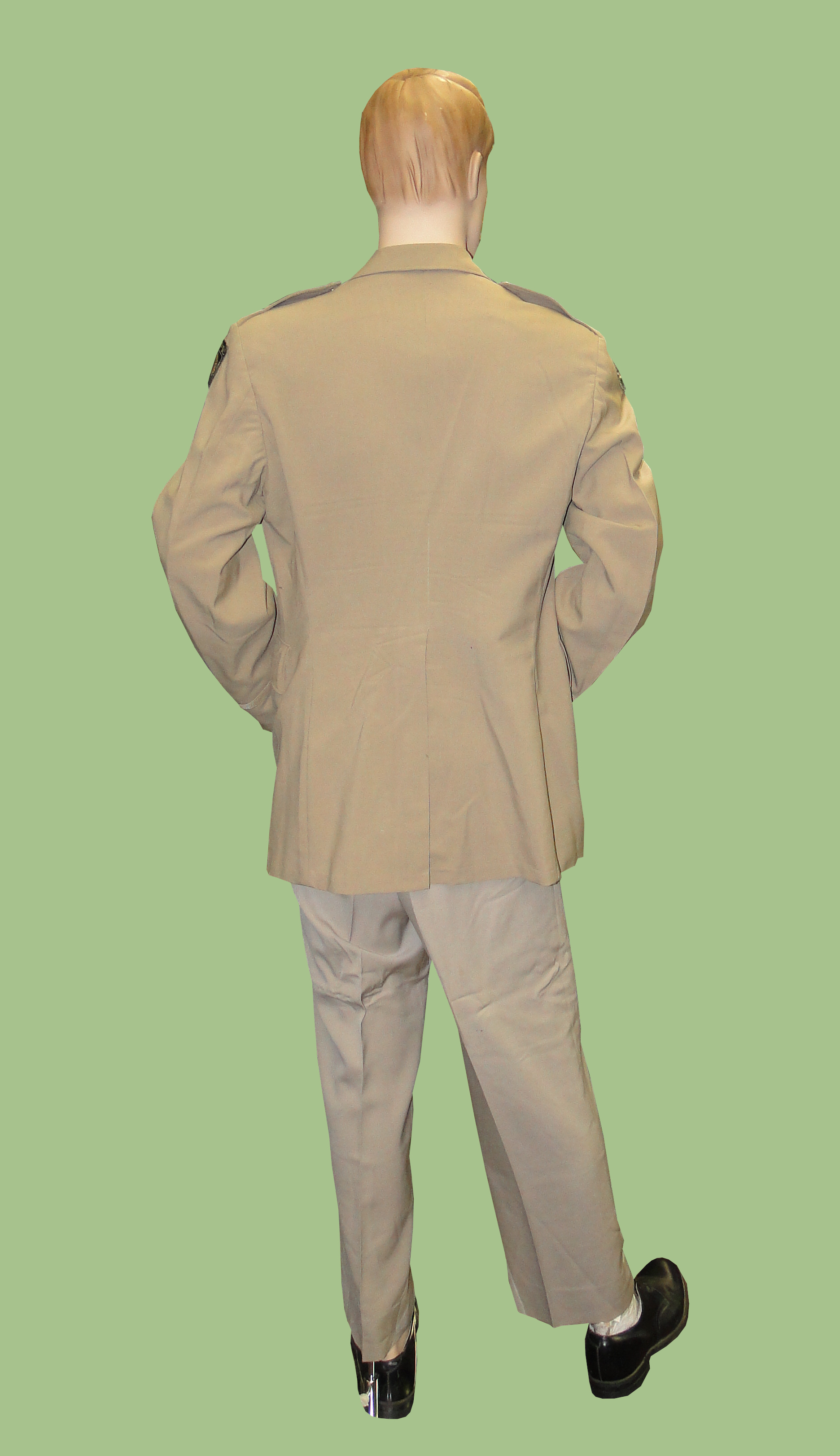
The ribbons are of cloth construction and are sewn to the breast area. Normally the ribbons are
built from metal and cloth and are attached via the use of pins. The cloth approach is more
streamline.
The uniform featured here belonged to a highly decorated officer. The main cluster of ribbons from top to bottom, left to right,
the ribbons seen here are:
Bronze star, American Defense, American campaign medal, Asiatic-pacific Campaign,
WWII Victory, Army of Occupation medal, National Defense medal,
Korean War medal, Philippines Liberation medal, Unknown.
An additional ribbon has been sewn to the top of the pocket flap. This ribbon is the USAMM. Philippine Presidential unit
citation.
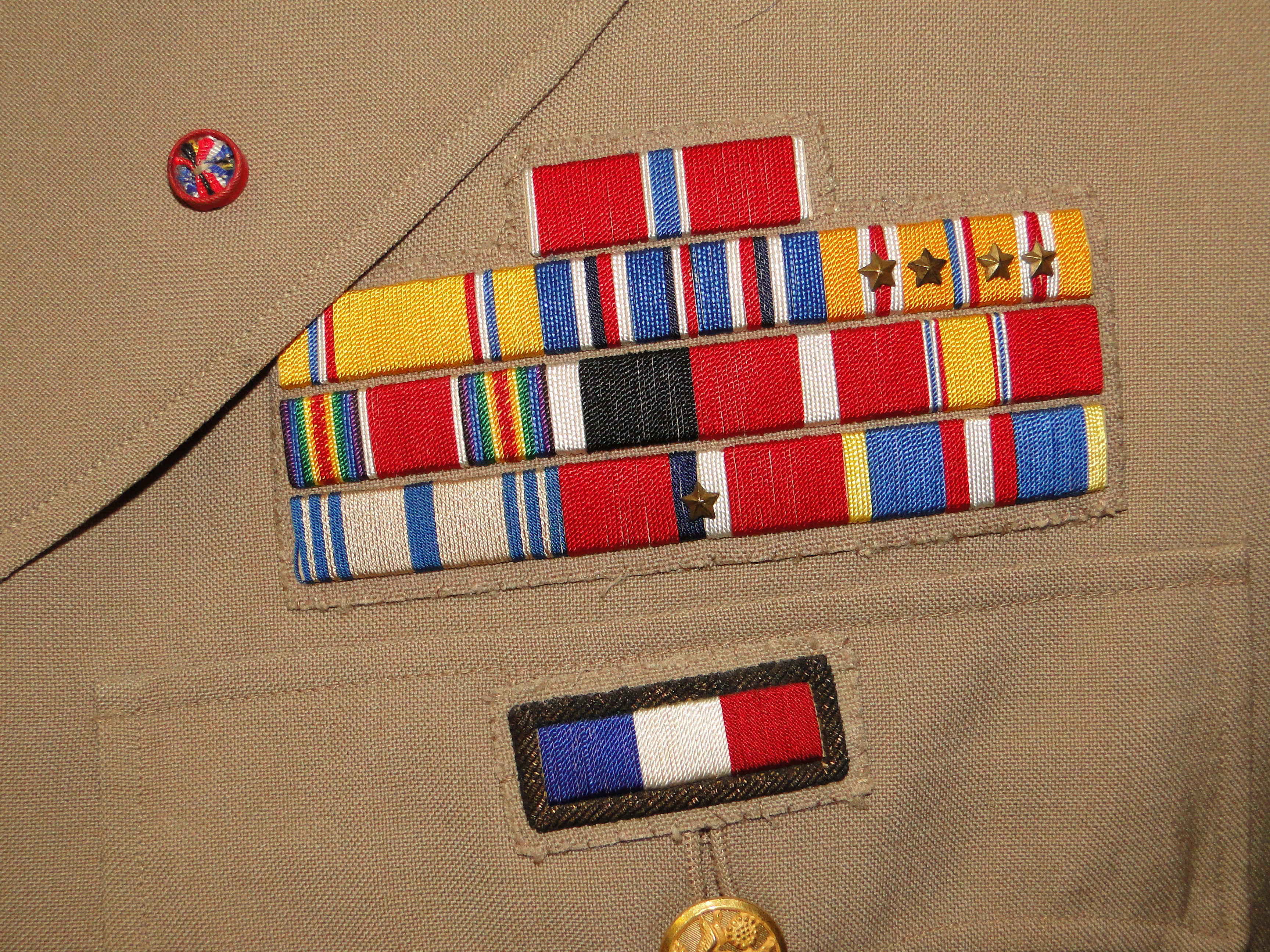
A triangular shape patch is sewn to the sleeve. Of dark green color with the word "SHAPE" written
in large, white font. The words "Vigilia Pretium Libertatis" is written surrunding two crossed
swords overimposing sun rays.
SHAPE (Supreme Headquarters Allied Powers Europe) is the military headquarters of NATO’s Allied Command Operations
(ACO) and plays a central role in coordinating the alliance’s defense strategies. Its history dates back to the early Cold War era.
Creation: SHAPE was established on April 2, 1951, as part of NATO's military structure to counter the growing Soviet threat.
First Supreme Allied Commander Europe (SACEUR): U.S. General Dwight D. Eisenhower was appointed the first SACEUR.
Initial Location: Originally headquartered in Rocquencourt, France, near Paris.
Mission: To plan and oversee the defense of Western Europe through coordinated military efforts among NATO member nations.

|
This page is a recognition and identification guide for WWII US military uniforms.
Multiple detailed photos of a specific sample are provided. Descriptions point out
clearly defined points that should be noted.
One of the most commonly asked questions is "How much is my WWII US uniform worth?".
A price guide is included here to address this question. The value of the uniforms is
reviewed over a period of several years. A trend can be observed. The present worth
of the American military uniforms in the collector's market is illustrated.
This service is provided free of charge to the visitor/enthusiast courtesy of
MilitaryItems.com,
a company dedicated to the preservation of military history and to providing quality
military antiques and collectibles to museums, institutions and the general public.
|
|

The photo shows the quartermasters collar pin.
The right side of the uniform has a Presidential Citation unit. The sixth Army patch is sewn to the
right sleeve.
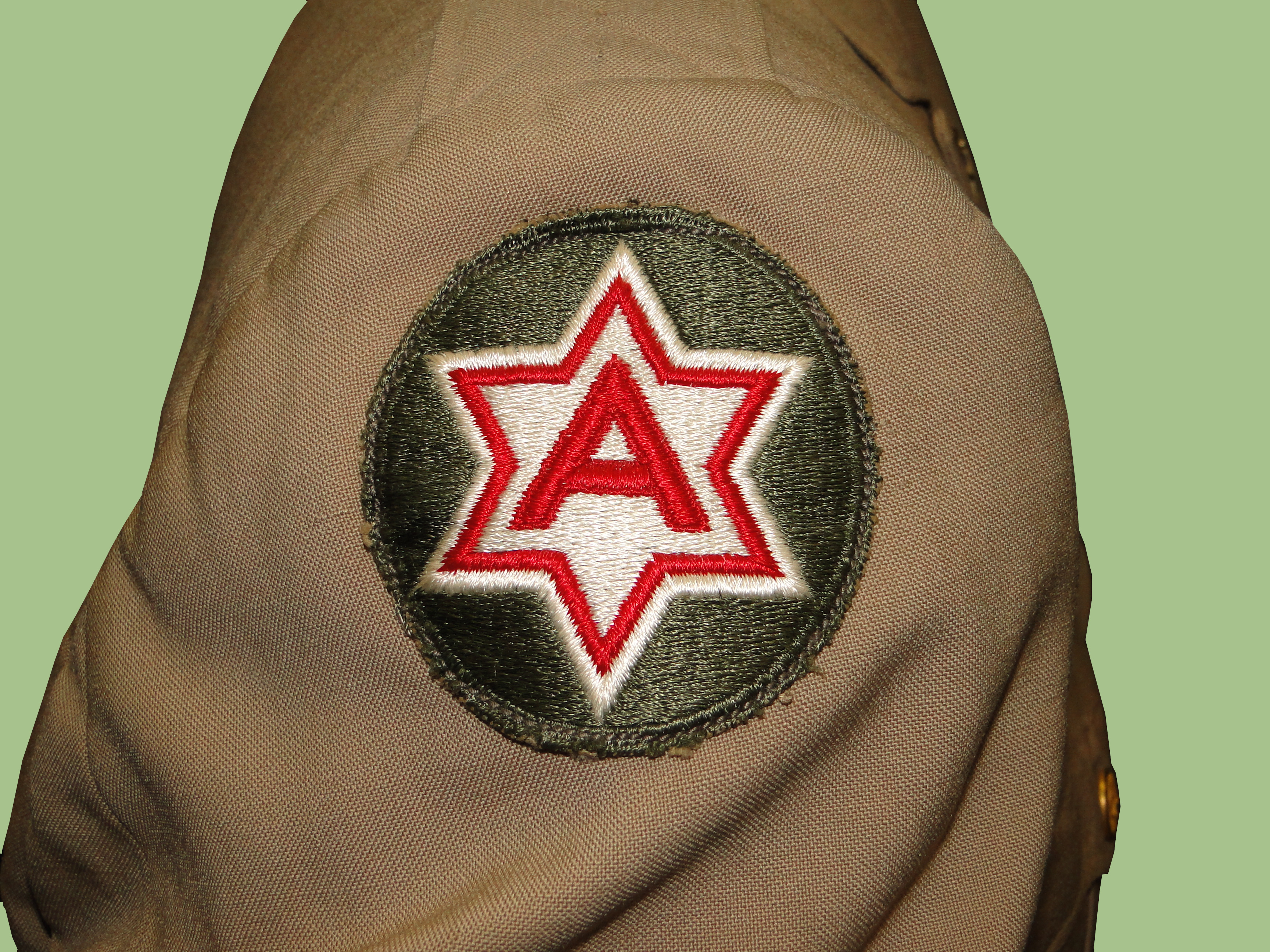
One sleeve has a 6th Army patch. The Sixth United States Army is soon to be reactivated as a field army of the United States Army. It was first activated in January 1943, commanded by Lieutenant General Walter Krueger. Under the code name Alamo Force, it assumed control of the majority of US Army units involved in Operation Cartwheel, the campaign to isolate and neutralize the Japanese base at Rabaul in New Britain. Following the completion of Cartwheel, Sixth Army joined Australian Army and other US forces on the north coast of New Guinea. Similar in conception to the island hopping operations of the central Pacific, the object of the attacks was to land, establish a garrison and airfield which could support the next strike, and then move on.
The uniform has three tags. The first one is known as a tailor tag. Officer's had
the option to have their uniforms custom made. However, they had to adhere to certain
standards set by the Army. This tag indicates compliance with military regulations.
Uniforms, Service, officers
Flece, khaki, Tropical, Worstel
Manfr No. 3976
Cont. W669 qm-24828
Dated December 30th 1942
Spec P.Q.D. no 301
Dated Nov 12, 1942
Stock no. 55-U-11543
phila Q.M. Depot
44R
|
The second tag is located on the inside of one of the lower pockets. It contains a
great deal of valuable data for the collector. Things such as the manufacturing date,
color, manufacturer's name, etc. Some of these tags are not readable due to excess
wear caused by washing. In other cases they are missing.
Regulation
Army Officer's uniform
|
A third tag is sewn into the uniform. This one indicates that the uniform was manufactured
by union members.

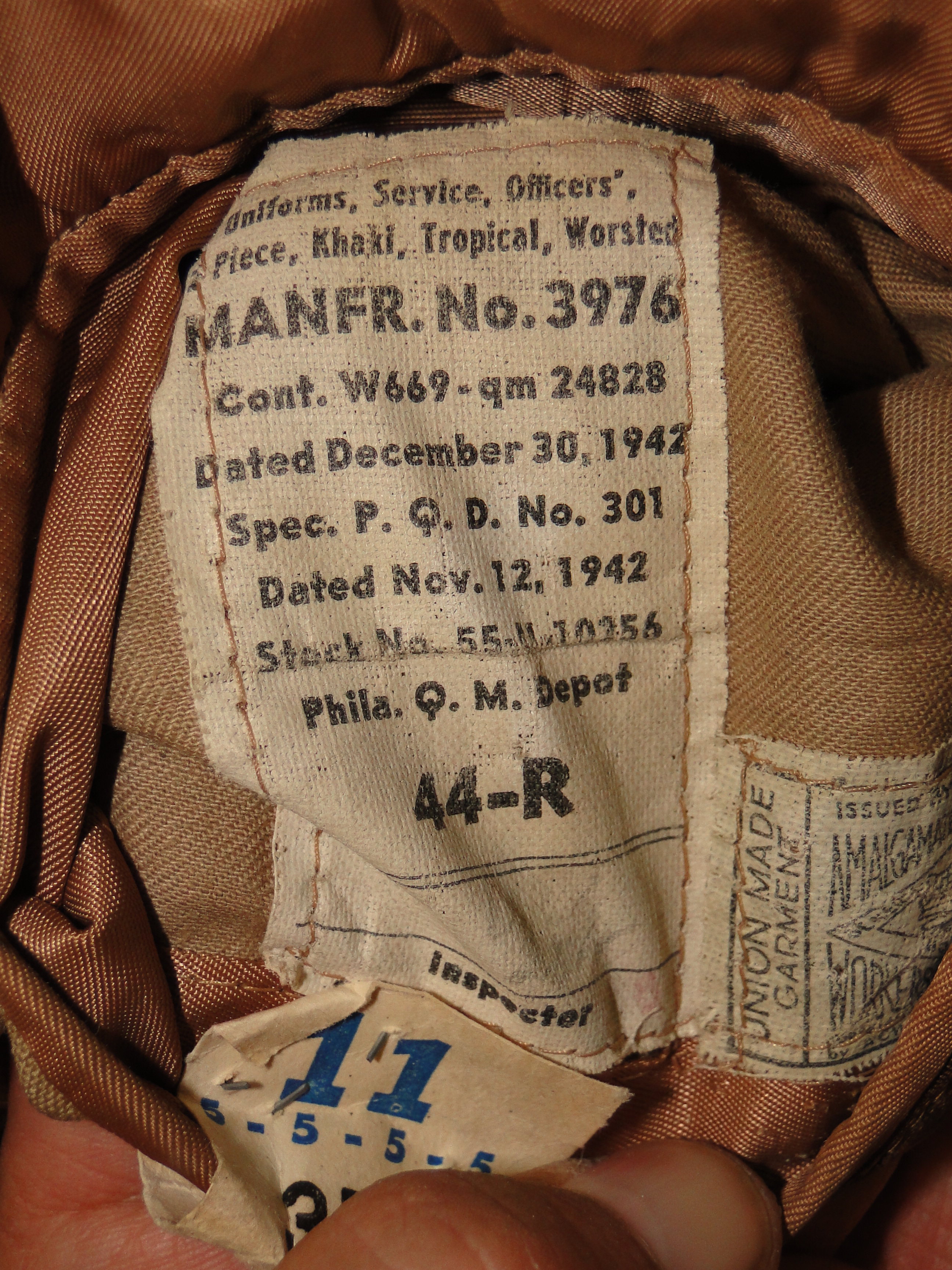

|
The buttons are made of brass. The design consists of the army eagle in relief. Gold color. Very high detail and quality.
|
Just above the pocket is the Presidential Unit Citation. Consisting of a Blue cloth contained within a
bullion frame. Very high quality construction.
|

|

|
This WWII US uniform may be currently
reproduced.
It is becoming more difficult to be able to tell the fake ones from the real ones because
the quality of the reproductions is improving. The collector must become familiarized with
the construction style and materials employed in the manufacturing of this item.
Attention to the details is critical in order to be able to determine the authenticity of
the collectible.
If you have an interest is seeing other WWII US uniforms, you can do so by going to our
American Military Uniforms Price Guide.
Where we cover Army, Navy, Air Force, Marine Corps and other organizations.
|


